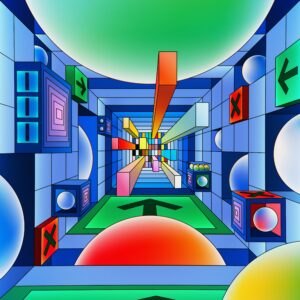
Help me rank on google
Achieving a higher ranking on Google involves a combination of strategies. Here’s a more detailed step-by-step guide to help you improve your website’s visibility
The future of web design is an exciting and ever-evolving topic. As technology continues to advance and new innovations emerge, it’s essential for web designers to keep up with the latest trends and stay ahead of the curve. In this blog, we will explore the trends that are shaping the future of web design and what designers can expect in the years to come.
Artificial intelligence and machine learning are changing the way we interact with websites and how websites interact with us. In the future, we can expect AI and ML to play a significant role in web design, with AI-powered tools and algorithms that can automate repetitive tasks and make the design process more efficient.
For example, AI-powered tools could help designers generate designs based on their preferences, generate custom images, and automatically optimize websites for different devices and screen sizes. Machine learning algorithms can also be used to personalize the user experience based on their preferences, behavior, and past interactions with the website.
As voice-activated devices like Amazon Alexa and Google Home become more popular, designers will need to take into account the growing importance of voice user interfaces. In the future, we can expect voice-activated websites to become more prevalent, providing users with a hands-free way of interacting with the internet.
Designers will need to consider how users will interact with their websites using voice commands and how to design a seamless experience that is intuitive and easy to use. This will likely require a new set of design skills and considerations, including understanding how users will speak to their devices, design conversational interfaces, and ensure that the website’s content is accessible via voice commands.
Virtual reality (VR) and augmented reality (AR) are becoming increasingly popular, and designers will need to take these technologies into account when designing websites in the future. VR and AR can provide users with an immersive experience that enhances the way they interact with a website, making it more engaging and memorable.
For example, VR could be used to provide users with a virtual tour of a product or service, while AR could be used to show users how a product will look in their own environment. Designers will need to consider how to design and develop VR and AR experiences that are accessible and user-friendly, and how to integrate these technologies into their websites in a way that is seamless and intuitive.
Micro-interactions are small, subtle animations and interactions that provide users with feedback and enhance the overall user experience. In the future, we can expect to see an increase in the use of micro-interactions in web design, as designers look for new and innovative ways to engage users and make their websites more interactive.
For example, designers could use micro-interactions to provide users with visual cues when they hover over a button or when they complete a task, such as filling out a form. Micro-interactions can also be used to create a more personalized experience, such as displaying a user’s name or profile picture when they log in to a website.
Responsive web design (RWD) is a design approach that enables a website to adapt to different screen sizes and devices. In the future, RWD will continue to play a crucial role in web design, as the number of devices and screen sizes continues to grow.
Designers will need to ensure that their websites are fully responsive, providing users with an optimal experience on any device.
Another trend that is shaping the future of web design is the growing importance of accessibility and inclusiveness. With an increasing number of people accessing the web from a range of devices, it’s essential that websites are designed to be accessible to everyone, regardless of their abilities. This means that web designers will need to consider accessibility features such as high contrast modes, alternative text descriptions, and voice-based navigation.
The use of chatbots and conversational interfaces is also becoming increasingly popular in web design. Chatbots are computer programs that are designed to simulate human conversation, making it easier for users to interact with websites and access the information they need. This will make it easier for users to find the information they need, without having to navigate through complex menus and pages.

Achieving a higher ranking on Google involves a combination of strategies. Here’s a more detailed step-by-step guide to help you improve your website’s visibility

Keep what’s your bread and butter Kill what do your users not care about? Combine which versions do users prefer? Optimize what new info can

A well-designed website with engaging content contributes to user satisfaction, which can indirectly impact your search rankings
